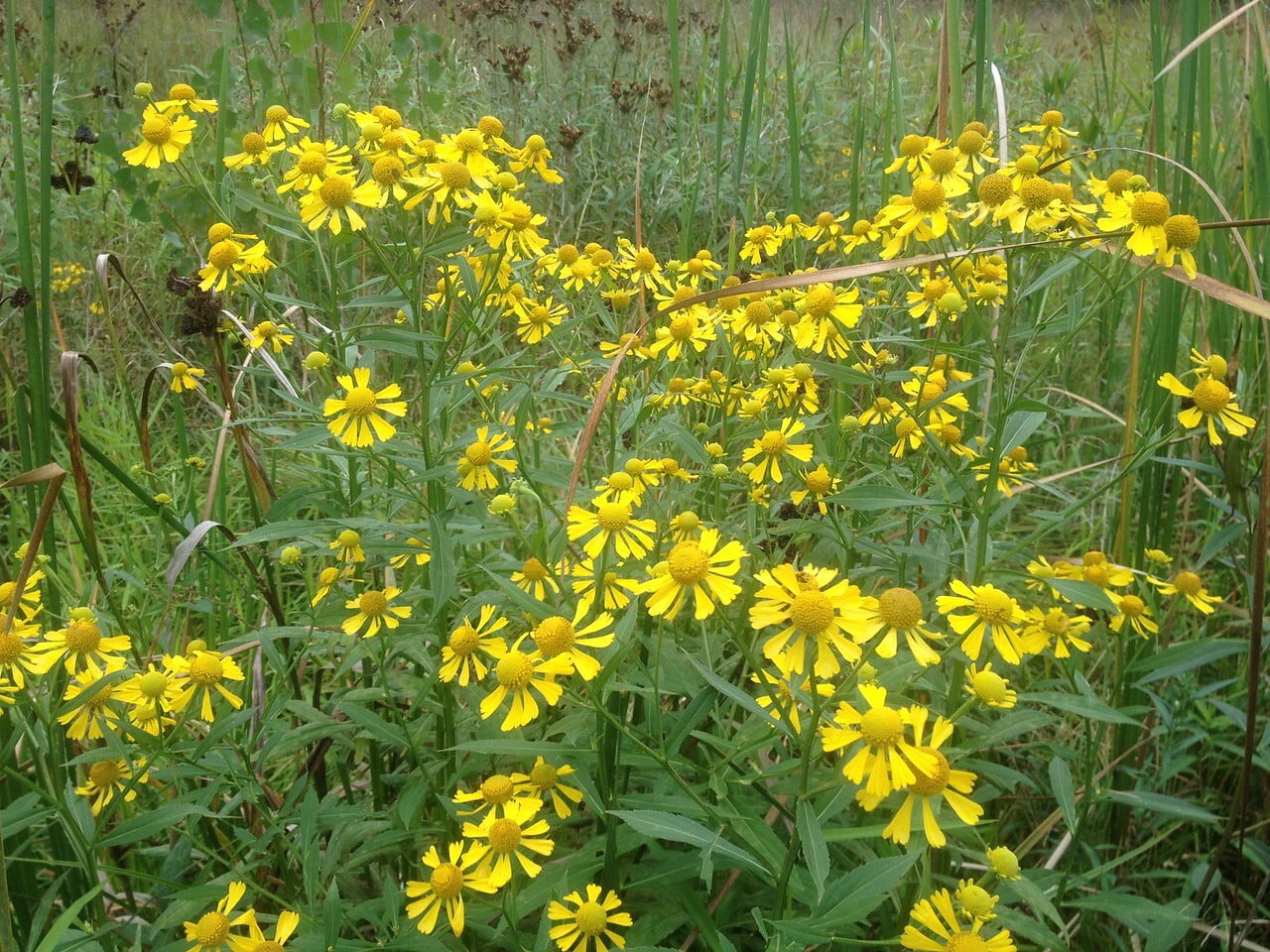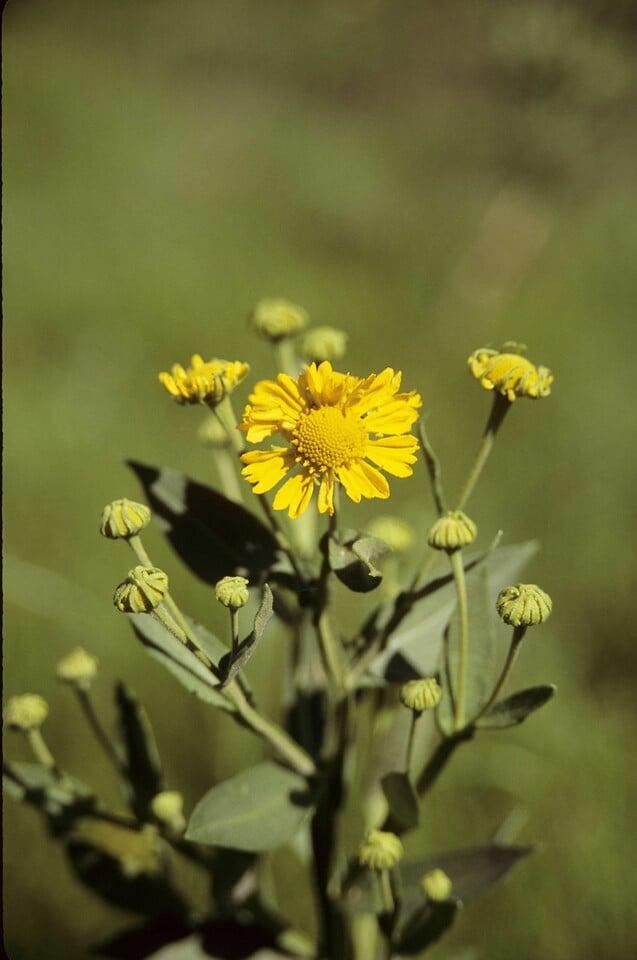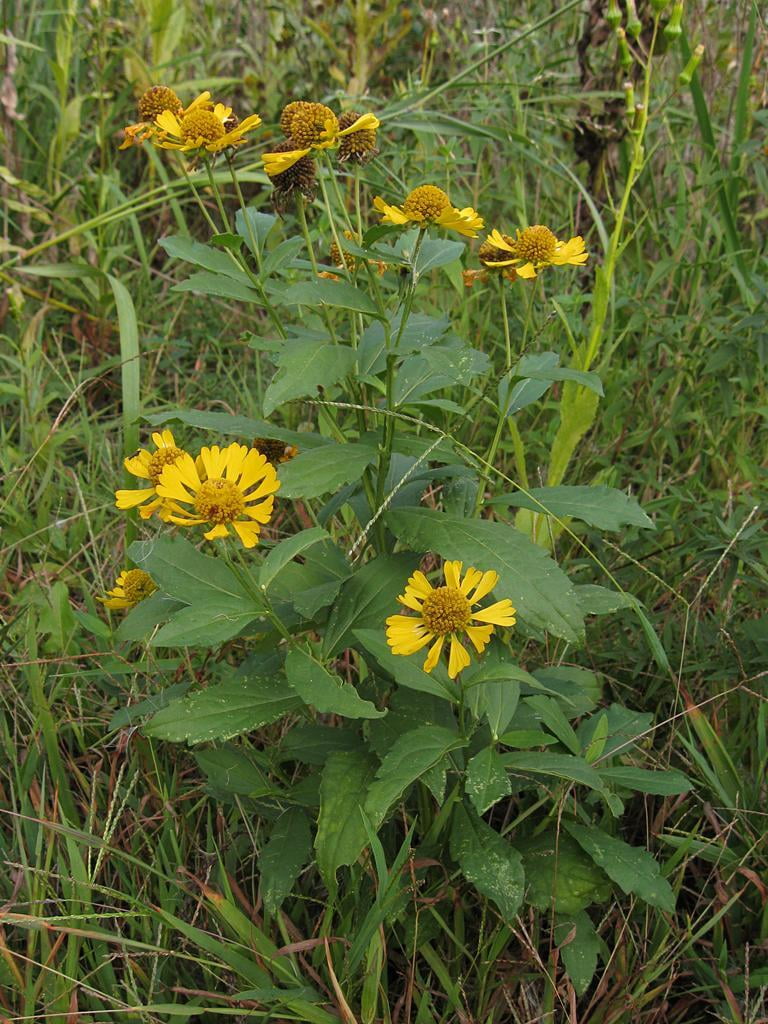Helenium autumnale
Sneezeweed Description:
Helenium autumnale, commonly known as sneezeweed, autumn sneezeweed, or Helen's flower, is a herbaceous perennial plant in the sunflower family (Asteraceae). It is native to North America and can be found growing in a variety of habitats, including wet meadows, prairies, and along stream banks.
The plant typically grows to a height of 2 to 5 feet and has an upright habit with lance-shaped leaves that are dark green and up to 6 inches (15 cm) long. In the late summer and early fall, it produces clusters of daisy-like flowers that are typically bright yellow, although they can also be orange, red, or brown. The flowers have a prominent brown central disk that is surrounded by drooping ray flowers.
Helenium autumnale is a hardy and easy-to-grow plant that prefers full sun and moist, well-drained soil. It is commonly used in prairie gardens, meadow gardens, and other naturalistic landscapes. In addition to its ornamental value, it is also valued for its ecological importance, as it provides habitat and food for a variety of pollinators, including bees and butterflies. It is also commonly used as a cut flower in floral arrangements. While it is called sneezeweed, it does not actually cause sneezing and is safe to handle.
Native Range:
Sneezeweed has a very wide range, and can be found natively across the continental United States.
Standard Plant Information:
Plant Height: 2' - 5'
Bloom Time: August - October
Preferred Habitat: Does well in full sun. Often found in moist fields, swamps, and along shorelines.
Sowing:
For most homeowners, the best option is to scatter seed on the ground by hand broadcasting at a minimum of 16-64 pls ounces per acre. For even coverage, we recommend that you broadcast seed in perpendicular rows across the site to ensure even coverage.
You’ll want to broadcast any grass seed first, which will get raked into the soil lightly. Next, it is ideal to mulch the area lightly with either a clean (no seed) straw or preferably with our native Little Bluestem straw, sold at our retail garden centers. After a light mulching is complete, now it’s time to broadcast your native wildflower seeds, which should not be raked into the soil. A good rain or watering is sufficient to cover the seed.
Planting:
Simply dig a hole in the soil slightly larger than the plant’s roots. Ensure that the soil line of the plant is maintained during the transfer (i.e. the plant should be at the same level with the ground as it was in the pot). Pack any loose dirt back around the plant and make sure you water it well the same day to ensure it has the best chance of survival.









